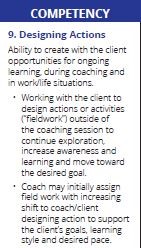In part one of this three-part blog post, the concern of coaching out raised the question amongst the coaches of how to prevent a conflict, and the answer included using a written agreement. Another part of the discussion with the coaches in training included asking whether the client is the company paying the bill, the employee receiving the coaching, or both. This led to considering what a coach does report to the company, and what is confidential for the employee. The consensus in our conversation was that clearly establishing the parameters and boundaries at the beginning was extremely important to ensure ethical treatment of everyone.
2. What are the parameters and boundaries for communication and reporting?
Prior to beginning a coaching relationship, coaches often have their client sign an agreement. The agreement generally describes the parameters of coaching; the time commitment including duration of individual sessions, frequency of sessions, and a minimum number of sessions if any; boundaries for calls or emails between coaching sessions; fees and payment information; options for rescheduling; confidentiality; and may address expectations or specify non-included professional services.
Because working for a company may change the need for specific clauses in this agreement, coaches often have an agreement used with employees that focuses on the parameters of coaching and confidentiality.
When the coach is working with a company and an employee of the company, the coach may be drawn in to a conflict such as the one we discussed about being asked to coach an employee out. The possibilities considered included discussing with supervisors and managers what could or could not be shared with the employee, and discussing with the employee what could or could not be shared with the company. Another option we reviewed is to have the coach create a form that lists the date and time of coaching sessions with a set of boxes to check on topics covered.


